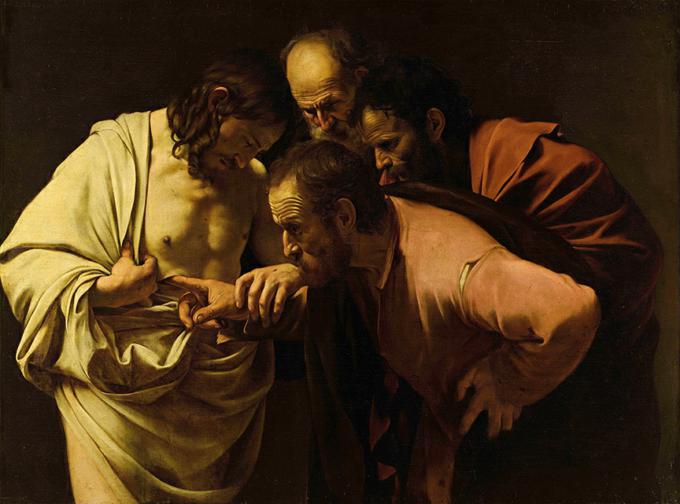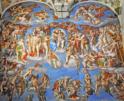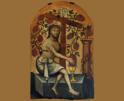
Faith
The wounds of Christ are not healed. Instead, they are "glorified." We cannot help but wonder why.

Wolfe
The deep and mysterious truth we celebrate at Easter is overwhelming. So much so, that we won't spend just the next 50 days unpacking it, but the rest of our lives, indeed whatever remains of human history. For 2,000 years, the church has testified to the Resurrection of Jesus Christ and pondered what it means: salvation, the forgiveness of sin, and the promise of eternal life with God in heaven.
One of the strangest aspects of Easter, and perhaps the most difficult to understand, is given to us by the very first disciples who saw and believed. Their eyewitness accounts of encounters with the Risen Lord do not describe what any of us would have expected. Jesus does not appear as a spirit or ghost but with a physical body that can eat and drink, speak, and be touched. Locked doors do not keep him out of the Upper Room. And yet, he still bears the wounds of his crucifixion.
It's puzzling, isn't it? Jesus of Nazareth, the Son of God who lived a human life here on earth, healed all kinds of afflictions, physical and not. But when he appears to his followers after the Resurrection, his own wounds remain. They are not scars that testify to injuries that have been healed. The wounds of Christ are not healed. Instead, they are "glorified." We cannot help but wonder why.
At first, Jesus uses his wounds to prove his identity. When he appears to the disciples on that first Easter night, he says, "Look at my hands and my feet, that it is I myself. Touch me and see, because a ghost does not have flesh and bones as you can see I have" (Lk 24: 39). To push the point even further, the Lord shows them his hands and feet. There can be no mistake. Anyone who was there in the Cenacle knew that this was Jesus, not a phantom or figment, but Christ in the flesh. His wounds testified to that fact. This was the same body that had hung on the cross, the same body that had suffered and died. That is, the same human body. Jesus is certainly divine, but he did not set his humanity aside. The Risen Son who ascends to the Father takes human nature -- wounds and all -- with him. We can recognize and know him by his wounds. Doubtless, he knows us by ours.
Secondly, the visible wounds of Jesus tell us that what Christ has done for us is inextricably linked to what we did to him. The enduring wounds of the cross reveal this truth. When we look at Jesus, we cannot help but see the depths of our own sinfulness. We cannot escape acknowledging responsibility for the cost of our rebellion against God. It quite literally tore him to shreds. In the Song of Songs, the divine lover longs to be with his beloved. "See! He is standing behind our wall, gazing through the windows, peering through the lattices" (Songs 2:9). God considers every soul his beloved. The pierced and wounded body of Christ is the "lattice" through which he gazes with love at each one of us. That is, when God looks at us, our lives are framed by the self-sacrifice of Jesus on the cross. He does not see us alone, but in Christ and through his wounds.
But the marks of crucifixion also testify to something else: Christ's saving sacrifice is complete, but the wounds that heal all of ours are still open. They are not a closed testament but continue to speak to us. Indeed, the wounds of the Risen Christ have been a source of eloquent prayer for many saints. Perhaps the most familiar are the words of the "Anima Christi" St. Ignatius placed at the beginning of his Spiritual Exercises, "In your wounds, hide me." Through prayer, the open wounds of crucifixion can become for us a hiding place, a refuge, a fountain of grace. The wounds we suffer can find purpose in the wounds Jesus still bears. Seeing his hands, his feet, his side, we can be united to Christ's sacrifice for our salvation and the salvation of the world. Our wounds can certainly be healed. But even better, like Christ's, they can be glorified.
- Jaymie Stuart Wolfe is a Catholic convert, wife, and mother of eight. Inspired by the spirituality of St. Francis de Sales, she is an author, speaker, and musician, and provides freelance editorial services to numerous publishers and authors as the principal of One More Basket. Find Jaymie on Facebook or follow her on Twitter @YouFeedThem.
Comments
Comments Policy
Recent articles in the Faith & Family section
-
The kingdom of ChristJaymie Stuart Wolfe
-
Pilgrims of hope -- Holy Year of 2025Father Robert M. O’Grady
-
Honor Mothers at Home and In the MissionsMaureen Crowley Heil
-
On the vineScott Hahn
-
What is the church's position on the treatment of animals?Jenna Marie Cooper


















